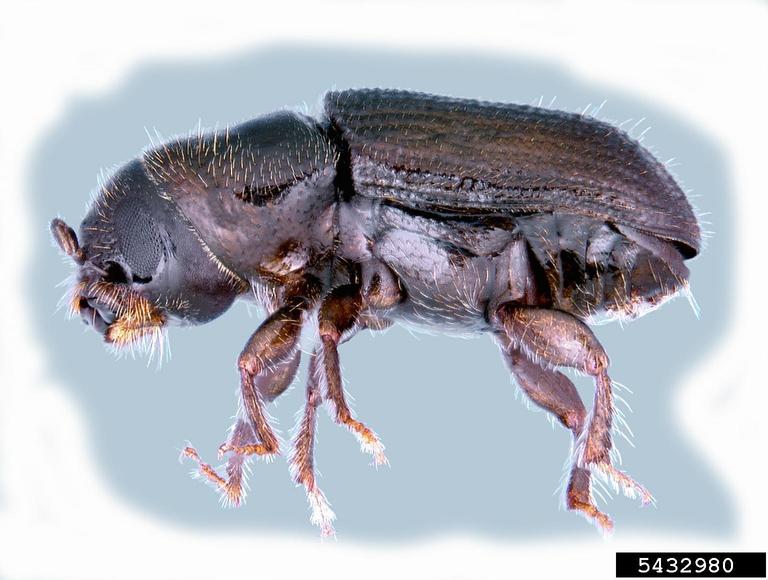Forest-Killing Beetles Are Swarming North Because of Climate Change
Credit to Author: Becky Ferreira| Date: Mon, 28 Aug 2017 15:00:00 +0000
The southern pine beetle, with its three-millimeter frame and short spindly legs, doesn’t cut an imposing figure. But en masse, these tree-slaying critters have been labeled “the most destructive insect pest of their forests” by the USDA Forest Service. By boring out serpentine trails under the bark of pine species, the pests sever nutrient flow within trees, killing their hosts within months.
Native to Central America, Mexico, and the southeast United States, the beetles are now invasively expanding northward on a path paved by climate change. They were found for the first time infecting trees in New York in 2014 and Connecticut forests in 2015.
Research published Monday in Nature Climate Change quantifies this worrisome trend in unprecedented detail, and predicts the potential fallout of a beetle invasion into vulnerable American and Canadian forests over the next 60 years. Given that this species cost the southeast US $100 million a year in timber losses from 1990 through 2004 and destroyed millions of acres of valuable forest ecosystems, its climate-enabled range expansion is likely to be disastrous for pines at higher latitudes.
The study’s authors, led by Corey Lesk, a graduate student at Columbia University’s Department of Earth and Environmental Sciences, generated predictions with “spatially explicit general circulation model (GCM) projections.” This means that the models project climate in granular detail at many locations, instead of generalized projections over a region or continent.
“Our method is a more detailed and realistic way to run these projections, and therefore gives a more credible result,” Lesk told Motherboard in an email. “Some past studies that attempted similar goals simply applied a uniform annual average climate change (such as 2°C warmer annual average temperatures) across the whole region. This is a good simplified first estimate, but that 2°C might not be true equally at all locations in the region, and that matters for providing a timeline of SPB range expansion.”

Lesk and his colleagues also emphasized the role of annual minimum temperatures in constraining beetle populations. Cold snaps can act as geographic thresholds for beetle populations, beyond which they cannot pass. But over the last 50 years, the chilliest nights of the year have steadily become warmer, allowing beetles to pull through and survive in forests that would have literally frozen them in their tracks a half century ago.
Using their new detailed parameters, Lesk and his colleagues projected that by 2020, the beetles will have made their way up Atlantic coast to Nova Scotia, Canada. By 2050, 78 percent of the pitch pine forests from southern Maine to eastern Ohio—around 48,000 square miles—could be warm enough to accommodate the beetles.
Read More: Scientists Are Surprised That Iconic East-Coast Trees Are Moving West
Between 2040 and 2060, the pests are likely to swarm forests from southern New England west to Wisconsin. By 2080, favorable conditions for the invasive species could extend over 48 percent of jack pines and 71 percent of red pines, a forest range of 270,000 square miles in the northeastern United States and southern Canada.
In other words, climate change is likely to usher the southern pine beetle into vast new territories within North American pine forests. Other effects of warming temperatures, such as increased risks of drought and wildfire, might either help or harm beetle in certain areas, while forest management approaches like tree-thinning or selective planting of beetle-resistant trees could take the edge off the advance.
But from Lesk’s point-of-view, even the best forestry measures are stopgap fixes that don’t fully address the central problem: The calamitous and short-sighted norms of our civilization.
“The expansion of [the southern pine beetle], not to mention a whole galaxy of other serious impacts of climate change, is a direct consequence of an excessively consumptive culture and economic system, which drives rising greenhouse gas concentrations in the atmosphere,” he said.
“All these impacts are ultimately quite avoidable, but that involves all of us seriously reconsidering the way we live. It looks like, as a society, we’re betting that we’ll be able to manage and innovate our way out of these impacts to preserve a functioning environment for our children. Unfortunately, I think there is real cause to doubt that we can pull this off before things go off the rails.”
Get six of our favorite Motherboard stories every day by signing up for our newsletter.